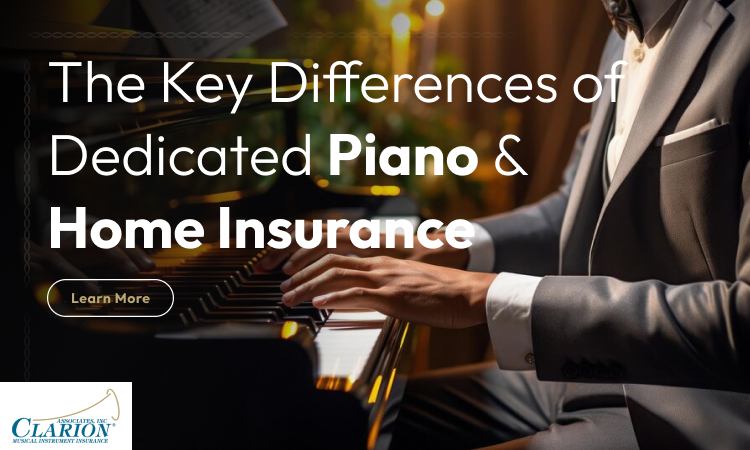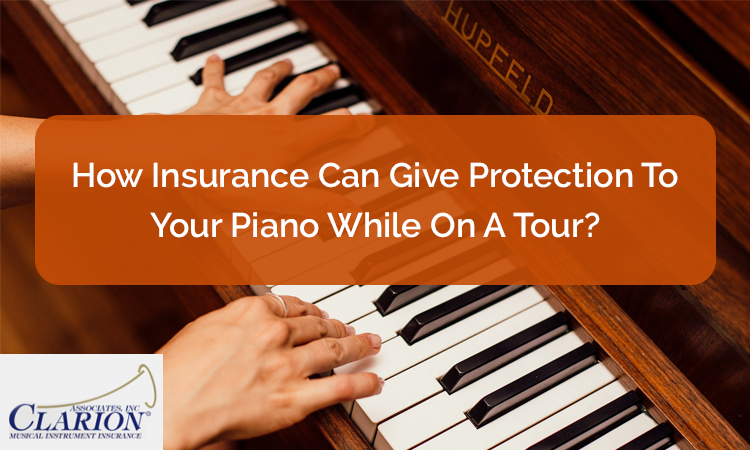Pianos are majestic instruments that fill homes with music, memories, and a touch of elegance. However, owning one comes with responsibility, and protecting your precious investment is crucial. It is where instrument-specific insurance comes in.
Moreover, with diverse lifestyles come diverse needs for protection. So, let’s explore how piano insurance can be tailored to work with different piano enthusiasts!
The Concert Pianist and Needs of Coverage
- Comprehensive coverage: If you play in concerts, your livelihood depends on your instrument. Right? So, make sure to opt for insurance that covers the most crucial aspects, including damage from travel, performance mishaps, and even theft. Consider rider options for sheet music, recording equipment, and performance cancellation due to unforeseen circumstances.
- Valuation matters: Ensure your piano is appraised regularly to reflect its true market value. Collaborate with your insurer to establish an accurate valuation method based on the instrument’s make, model, condition, and historical significance. Make it a point to get your gear appraised regularly.
- Liability protection is key: Public performances come with inherent risks. Public liability coverage protects you from financial repercussions if your piano accidentally damages property or injures someone during a performance.
The Weekend Hobbyist
- Finding the balance: You love playing for personal enjoyment, but peace of mind is priceless. Consider accidental damage coverage for spills, falls, or sudden power surges. Add-ons like sheet music protection or tuning assistance can also be valuable. When you find the right balance and know that your piano is covered, the sigh of relief seems heavenly.
- Focus on affordability: Compare deductibles and coverage limits to find a plan that fits your budget without compromising essential protection. Online comparison tools can simplify the process. You can also get in touch with the music instrument insurance provider you intend to choose to fetch better answers.
- Consider usage-based options: If your piano sees limited use, explore pay-per-use or seasonal coverage options that align with your playing habits.

The Musical Family
- Childproofing your coverage: Curious little hands and uncontrolled playdates pose unique risks. Opt for accidental damage coverage with a lower deductible to address potential mishaps. Childproof your piano’s coverage and play in peace.
- Future-proof your policy: As your children progress, their musical needs might evolve. Choose a plan that allows for easy adjustments in coverage limits or valuation as their skills and instrument value increase. Flexibility is all you need.
- Think beyond the piano: Consider including additional musical instruments or equipment used by family members under the same policy for convenience and cost-effectiveness.
The Treasured Collector
- Unveiling true value: Vintage pianos hold immense sentimental and financial worth. Seek expert appraisals to determine the accurate value for comprehensive piano insurance coverage.
- Specialized protection: Consider rider options for specific risks like historical significance, exhibition coverage, or specialized restoration needs.
- Climate control matters: Pianos are sensitive to environmental factors. Ensure your policy covers damage caused by humidity fluctuations or extreme temperatures.
Here’s your not to forget list!
- Regular communication is key: Keep your insurer informed about any changes in your piano’s value, location, or usage to ensure uninterrupted coverage.
- Shop around and compare: Different insurers offer varied coverage options and pricing. Get quotes from multiple providers before making a decision.
- Read the fine print: Understand the exclusions and limitations of your policy to avoid any surprises during a claim.
By tailoring your musical instrument insurance to your unique lifestyle, you can ensure your beloved device remains protected, allowing you to continue creating beautiful music for years to come. Remember, the right insurance plan should be like a well-tuned piano: perfectly in harmony with your needs and aspirations. So, if you have been thinking if or not it would be a wise thing to do to buy a dedicated coverage for your equipment, you have your answer handy. Without further delay, get the right protection your darling piano deserves right away! Always remember – misfortunes are almost always unpredictable.


